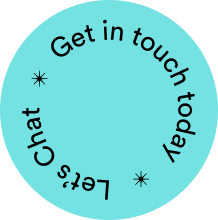
How to create a content marketing funnel that converts
Summary
Guide your audience from awareness to action with a powerful content marketing funnel. Aligning the right content with each buyer stage builds trust, drives engagement, and boosts conversions. Discover how to craft content that connects at every step.
A content marketing funnel serves as a strategic framework to guide your potential customers through each stage of their buyer’s journey, from initial awareness to final conversion.
Aligning the right content with each phase of this journey will help your business build trust, address audience needs and ultimately turn interest into action.
Whether you’re focused on B2B content marketing or speaking to a wider audience, an effective funnel helps you deliver effective messages at the most opportune moments.
Understanding the funnel stages (TOFU, MOFU, BOFU)
A well-structured content funnel typically includes three core stages: top of funnel (TOFU), middle of funnel (MOFU) and bottom of funnel (BOFU). Each one plays a distinct role in moving prospects closer to conversion.
TOFU: the awareness stage
At this stage, your goal is to attract attention and introduce your brand to new audiences. Users are likely experiencing a problem or seeking general information, so TOFU content should focus on education, inspiration or industry insights.
MOFU: the consideration stage
Now that you’ve caught your audience’s attention, it’s time to deepen the relationship. MOFU users are exploring potential solutions and evaluating their options. This is your opportunity to provide value, answer questions and position your brand as a trusted resource.
BOFU: the decision stage
At this point, your prospect is ready to buy – they just need reassurance and a final nudge. Content at this stage should highlight your unique selling points, customer success stories and product benefits to help convert leads into paying customers.
Crafting content for each funnel stage
Creating content that matches user intent at each funnel stage is essential to moving prospects closer to a decision. Let’s look at how you can tailor your approach effectively.

TOFU content
At the top of the funnel, your audience is looking for information, not a sales pitch.
- Blog posts allow you to target relevant search queries and share valuable insights, making them a core element of many content marketing strategies.
- Infographics help break down complex topics visually, boosting engagement and shareability.
- Social media content, particularly on platforms like LinkedIn or Instagram, helps you reach broader audiences with accessible, brand-aligned messaging.
These types of content marketing are designed to raise awareness, spark interest and encourage further exploration.
MOFU content
In the middle of the funnel, prospects are actively researching solutions and comparing options. This is where lead nurturing content plays a critical role.
- Ebooks provide detailed, downloadable value that can also support email capture.
- Webinars offer interactive, real-time learning and allow your brand to demonstrate authority.
- Case studies build trust by showcasing real-world success and are especially powerful in B2B content marketing.
Together, these formats help educate and qualify leads while guiding them further down the content marketing funnel.
BOFU content
The priority at the bottom of the funnel is to convert prospects into customers. At this stage, buyers are evaluating final options and seeking reassurance.
- Product demonstrations allow you to showcase your offering in action, highlight standout features and provide more clarity for your audience. They’re particularly effective in video form.
- Testimonials serve as powerful social proof. Real-world feedback from satisfied customers builds credibility and helps remove lingering doubts, especially in B2B content marketing where trust is crucial.
- Free trials or freemium models lower the barrier to entry, giving users a no-risk opportunity to experience your product or service first-hand.
These methods are designed to drive action – a vital goal of any strong content funnel strategy.
Implementing a content funnel strategy
Building a successful content marketing funnel starts with a clear understanding of your audience, goals and available resources. Begin by mapping out your customer journey – from awareness to decision – and align your content creation activities with each stage. This ensures that your messaging stays relevant and purposeful throughout.
A strong content marketing strategy should include defined goals for each funnel stage, such as increasing traffic, generating leads or improving conversions. Tools like content calendars, CRM platforms and marketing automation systems can help you plan, distribute and measure your funnel content more efficiently, especially when managing multiple formats and touchpoints.
Don’t forget to tailor each asset using search engine optimisation best practices. Clear meta titles, keyword targeting and fast-loading, mobile-friendly pages all support greater visibility and engagement.
Whatever content types you’re working with, consistency and strategic intent are what make your funnel convert.
Measuring and optimising funnel performance
To get the most from your content marketing funnel, you need to track how each stage is performing. Set clear key performance indicators for every phase – for example, traffic and impressions at the awareness stage, engagement and downloads at consideration, and conversions at decision.
Platforms like Google Analytics and built-in social media insights can help monitor how users interact with your content. Pay close attention to drop-off points, as these often highlight content gaps or friction in the user journey.
Use these insights to refine your content marketing strategy. Update underperforming assets, test new formats and adapt your messaging to match shifting audience needs. This kind of data-led content marketing helps you stay agile and ensures your funnel keeps delivering long-term results.
Strong performance tracking also highlights the broader benefits of content marketing – from building brand equity to generating high-quality leads.
Marketing funnel challenges and solutions
Even the strongest funnels will face challenges. Here are some content marketing tips to help you overcome common obstacles:
- Content gaps: If you’re missing key touchpoints in the funnel, prospects may drop off before converting. Regular content audits can help you identify where additional blog posts, lead magnets or product-focused assets are needed to keep users engaged throughout their journey.
- Audience drop-offs: When prospects disengage partway through the funnel, it’s often due to mismatched content or unclear next steps. Analytics tools can help you pinpoint where users are exiting and adjust your content strategy, CTAs or delivery method accordingly.
- Inconsistent brand voice: If your content feels disjointed across channels or funnel stages, it can weaken trust and impact conversions. Establish and follow brand tone and voice guidelines to ensure consistency in your content creation, whether you’re writing social media copy or webinar scripts.
- Low conversion rates: A steady flow of leads means little if they’re not converting. A/B test key elements such as landing pages, email sequences and CTAs to identify points of friction. Small tweaks can lead to significant improvements in funnel performance.
Ready to optimise your content marketing funnel?
Creating a funnel that converts takes more than guesswork. With the right strategy and execution, you can guide prospects from discovery to decision.
Looking for help to build or improve your funnel? Contact Axonn and let’s talk.
